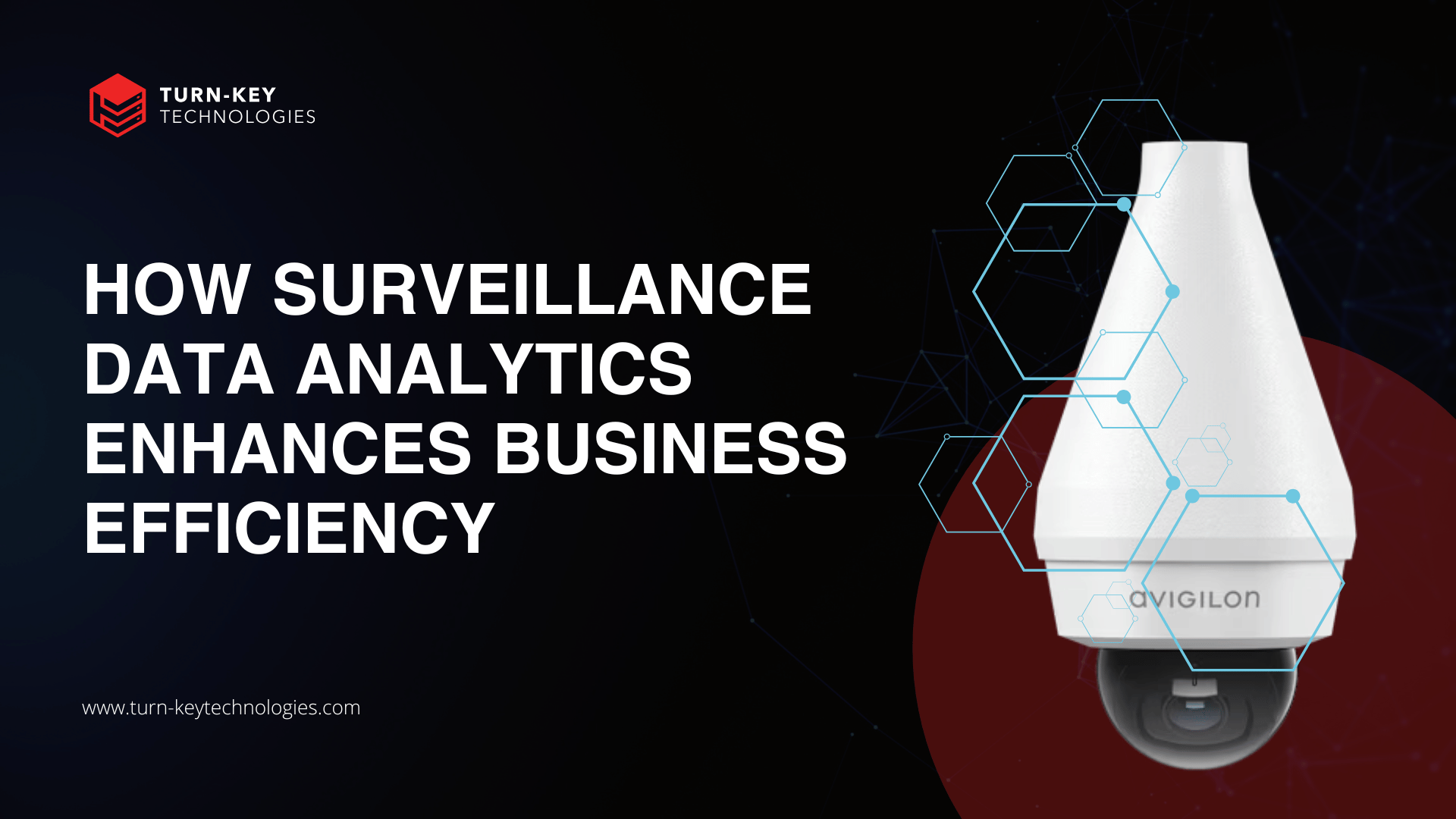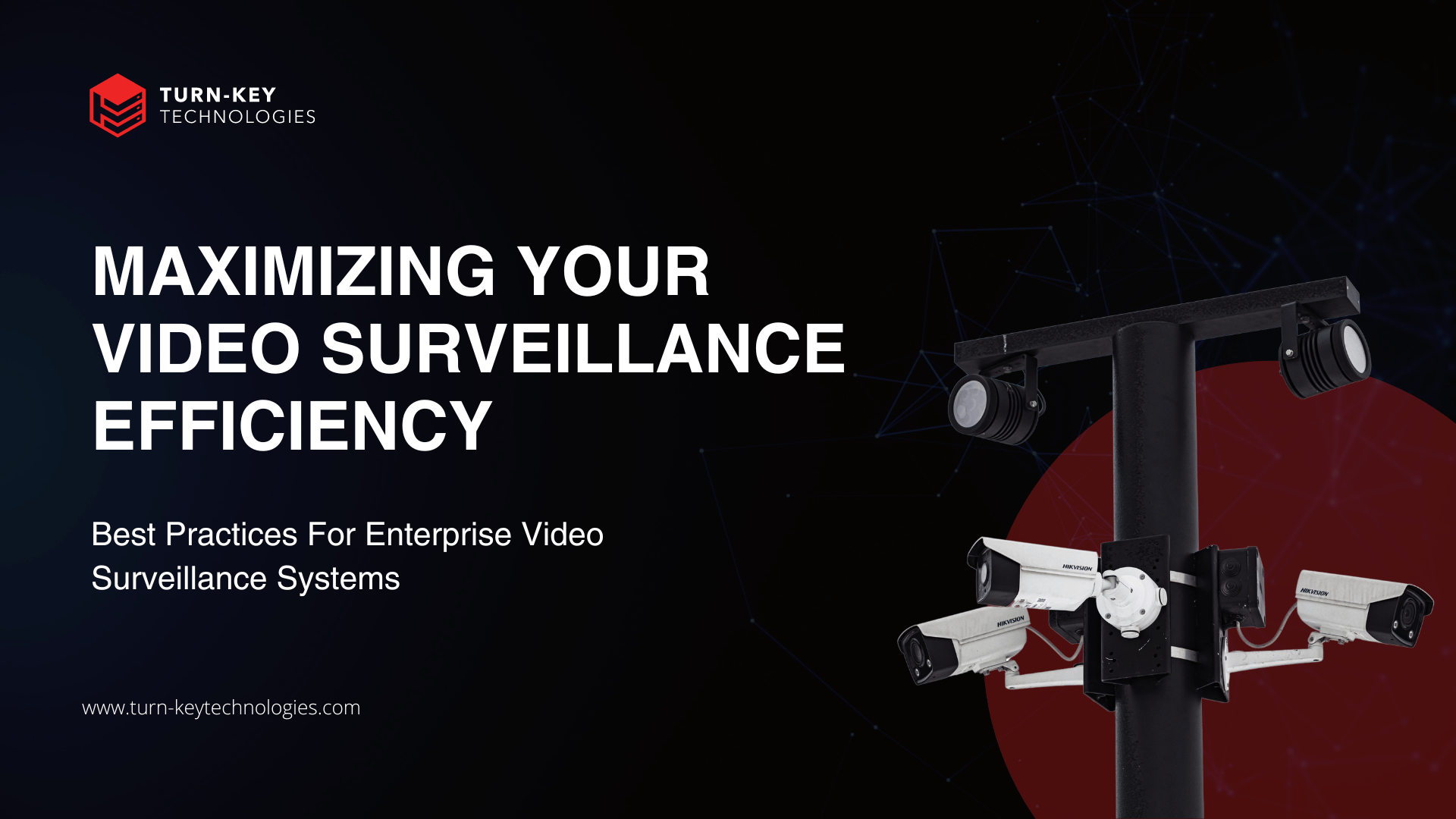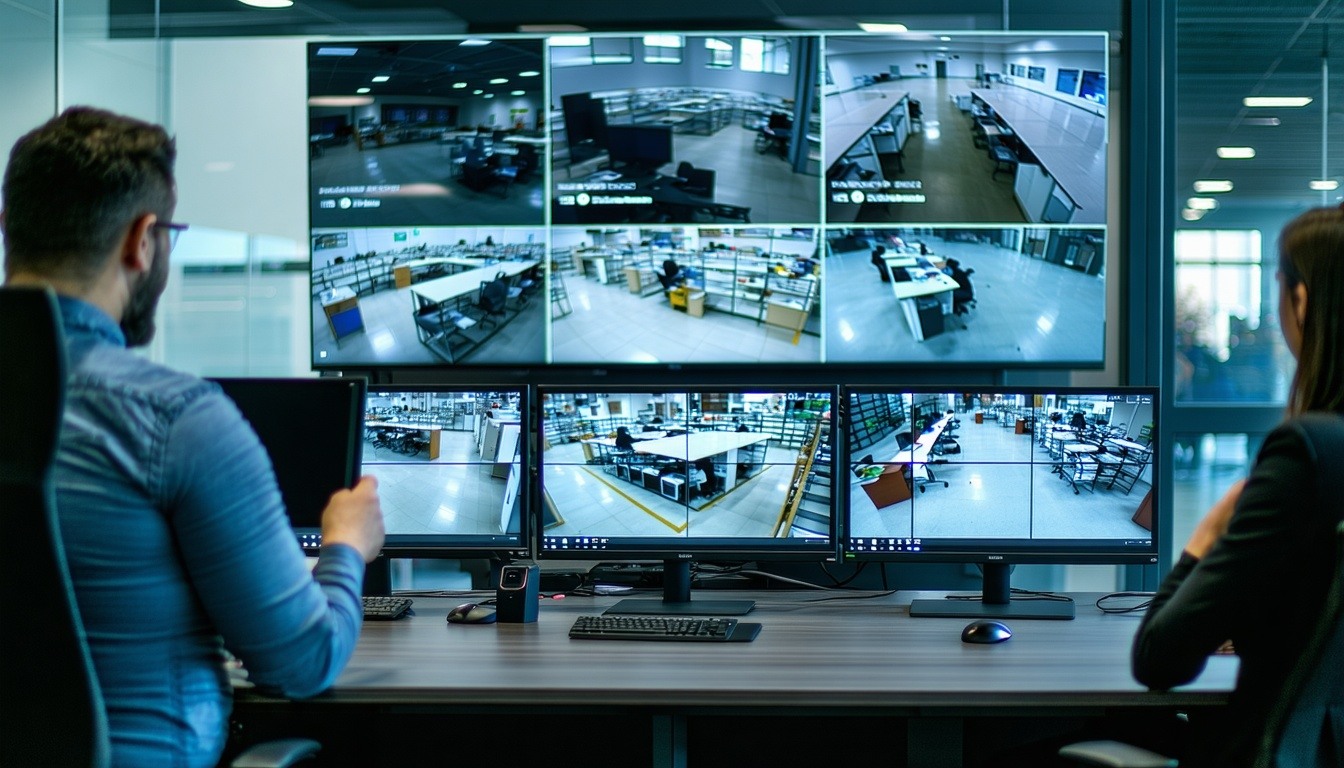Using Surveillance Data Analytics to Leverage Operational Insights and Drive Business Efficiency
As businesses strive to optimize operations and make informed, data-driven decisions, video surveillance has moved beyond its traditional role of...
9 min read
Admin : Apr 25, 2025 9:38:59 AM

Video surveillance has come a long way from the days of grainy, static footage reviewed only after an incident. As the volume of video data continues to grow, expecting human teams to monitor every feed or sift through hours of recordings has become unrealistic. The pressure on security teams is rising, and the tools they use need to match that demand.
That’s where artificial intelligence comes in. AI-powered video analytics adds a layer of intelligence to surveillance systems, helping them make sense of what’s happening in real time. Whether it’s spotting unusual activity, identifying specific behaviors, or flagging potential issues as they emerge, AI helps teams respond more quickly and work more efficiently. It's less about just recording what happened and more about understanding the moment and being ready to act.
In this article, we’ll look at how the power of AI is shaping the future of video surveillance. You’ll learn about the key technologies behind this shift, how they’re helping security and IT teams work smarter, and the ways these systems are being used beyond traditional security, from improving operations to gaining insights about how spaces are used.
Security teams today are facing a growing set of challenges. Threats are evolving, systems are expanding, and the volume of video data being captured has become difficult to manage. Relying on human operators to monitor every feed or review footage after an incident is inefficient and too often leads to slow response times or overlooked events.
AI-powered video analytics tools offer a more effective approach. These help identify what matters in real time, alerting teams to activity that needs attention and reducing the burden of constant monitoring. With AI assisting in the background, security industry professionals can focus their efforts where it counts most.
Many older video management systems were designed to record and store footage for later review. While that foundation is still useful, it comes with limitations. Human operators are prone to fatigue, which can lead to missed incidents. False alarms caused by harmless movement, like animals or shifting shadows, are common and disruptive. Reviewing hours of footage to investigate a single event also pulls resources away from more important responsibilities.
These systems don’t have the ability to tell the difference between routine activity and something that poses a risk. That gap is exactly where AI makes a measurable difference by helping teams prioritize and act with confidence.
AI allows surveillance systems to analyze video in real time. This means detecting objects, identifying unusual behavior, and flagging anomalies as they happen. Teams can respond immediately to emerging situations rather than piecing together what happened after the fact.
This shift supports more efficient security coverage. AI can watch over wide or busy areas without requiring constant attention from operators. It provides focused alerts so security teams are only notified when something meaningful is detected, which helps reduce response times and improves overall awareness.
Security leaders are expected to maintain safe environments, minimize risks, and respond to incidents quickly. With AI, they can manage growing volumes of video more effectively by surfacing relevant events and cutting down on time spent reviewing footage.
IT teams are focused on making sure the underlying systems are reliable, scalable, and aligned with existing infrastructure. That includes managing network bandwidth, ensuring sufficient storage, and maintaining processing capabilities that can handle high-resolution video. AI video analytics solutions are increasingly designed to meet these needs with flexible deployment options and built-in compatibility with other platforms.
AI is redefining what’s possible in video surveillance by introducing advanced capabilities that go far beyond traditional motion detection. These innovations allow systems to understand context, interpret behavior, and respond to situations in real time. The following six video technologies are driving that transformation.
Real-time video security analysis is perhaps the most impactful advancement. AI analytics processes live video feeds instantaneously, identifying critical events as they occur. This means instant threat detection and alerting for activities like intrusion, loitering in restricted areas, or the presence of unauthorized vehicles.
Continuous environment scanning allows the AI to monitor large and complex spaces simultaneously, ensuring that potential security threats are not missed, even in busy or expansive environments. The ability to act instantly based on real-time information is a significant leap forward for overall security operations.
Aside from simply detecting movement, advanced video analytics can also identify and classify specific objects. This includes differentiating between people, vehicles, and even suspicious items left behind. This smart object detection is crucial for reducing false alarms.
Traditional security systems might trigger an alert for any movement, leading to alert fatigue. AI, with its contextual awareness, can be trained to ignore harmless events like a blowing leaf or an animal, focusing security teams to focus only on real security threats involving specific types of objects. This precision enhances the efficiency of security operations and ensures that alerts are meaningful.
AI can detect specific behaviors and identify anomalies that deviate from normal patterns. This includes detecting loitering in sensitive areas, trespassing, unusual movements within a crowd, or objects being removed from a location. Behavioral and anomaly detection allow for predictive alerts based on observed trends.
If an AI system learns the typical flow of traffic or pedestrian movement in an area, it can flag activities that fall outside that norm as potentially suspicious, enabling proactive security measures before an incident fully develops.
Facial recognition technology allows AI to identify persons of interest in real-time by comparing faces in video feeds against a database. This can be valuable for identifying known security risks or verifying authorized personnel in restricted areas. Implementing facial recognition requires careful consideration of privacy and regulatory concerns, such as GDPR and CCPA. Robust policies and technical safeguards are essential to ensure responsible and compliant deployment of this powerful capability.
The development of agentic AI means that systems can not only detect threats but also initiate automated responses. This could include locking down doors, triggering specific alarms, or sending immediate notifications to security personnel based on predefined rules.
Explainable AI (XAI) addresses the "black box" problem of some AI systems. It aims to provide transparency in decision-making, explaining why the AI flagged a particular event. This is critical for auditability, building trust in the AI system, and allowing security professionals to understand and validate the AI's alerts and actions.
Visual Language Models represent a cutting-edge advancement, allowing users to query video insights using natural language. Instead of searching through timestamps or relying solely on predefined alerts, security personnel can ask questions like "Show me all instances of a red car entering the parking lot yesterday afternoon" or "Find everyone wearing a blue jacket near the main entrance this morning." This significantly enhances the searchability of visual content, making it faster and easier to find relevant information within vast amounts of video data. VLMs bridge the gap between visual information and human language, revolutionizing video search capabilities.
Adopting AI-powered surveillance systems provides organizations with upgraded technology, transforming their approach to safety, efficiency, and decision-making. These intelligent video analytics platforms offer deeper insights, automate routine tasks, and equip teams with the tools to respond more quickly and with greater precision. Here’s how organizations benefit from implementing scalable, AI-enhanced video management solutions:
AI-powered video analytics solutions provide a unified view of threats and events across an entire surveillance deployment. Intelligent systems can correlate information from multiple cameras and even other sensors, offering comprehensive situational awareness. Features like heatmaps and spatial analysis help identify areas of high activity or potential bottlenecks, providing valuable insights for security planning and resource allocation. Enhanced situational awareness allows security teams to have a clearer picture of what is happening across their facilities, enabling more informed decision-making.
AI analytics excel at intelligent filtering of harmless events. By accurately identifying and classifying objects and behaviors, AI drastically reduces the number of false alarms that inundate security personnel using traditional security systems. This allows security teams to focus their attention and resources on real threats, leading to faster and more effective response times. The time saved by not investigating false alarms directly contributes to increased efficiency and improved morale for security staff.
AI can automate many of the tedious and time-consuming tasks associated with monitoring video. Task automation, such as automatic alerting and initial incident assessment, reduces the workload on security personnel. This leads to significant cost savings on labor and monitoring expenses. Security teams can be more productive, focusing on higher-value activities like proactive patrolling, threat assessment, and strategic security planning. AI-driven video surveillance systems contribute directly to improving the efficiency of security operations.
Modern AI-powered video analytics solutions are designed with scalability and flexibility in mind. Cloud integration allows for centralized management of distributed surveillance deployments across multiple sites, simplifying operations for large organizations. These systems can adapt to varying requirements, whether deploying on-premise, in the cloud, or at the edge (edge computing involves processing data closer to the source, reducing latency). This adaptability is crucial for organizations with complex and evolving security needs.
One of the most exciting developments in the video surveillance sector is the increasing use of AI beyond traditional security applications. Intelligent video analytics solutions are becoming powerful tools for business intelligence, enhancing customer experience, and optimizing operations.
Retailers are leveraging AI-powered video analytics to gain a deeper understanding of how customers engage with their stores. These intelligent systems can monitor foot traffic, measure dwell time near displays, and map how shoppers navigate the space. The insights gathered help inform smarter decisions around layout, product placement, and staffing.
This kind of data-driven visibility enhances security and the overall shopping experience. Retailers are using it to boost sales, streamline operations, and create environments that respond more directly to customer behavior—an example of AI reshaping video monitoring into a strategic business tool.
In office buildings, campuses, and enterprise facilities, AI can monitor how spaces are being used throughout the day. Heatmaps generated from AI-analyzed video can also stream highlight traffic patterns and space occupancy, helping facilities teams understand usage trends.
Proactive security solutions like this support informed decisions regarding space planning, energy use, and building design, transforming surveillance cameras into valuable sources of operational intelligence. The result is smarter, more sustainable facility management that extends the value of surveillance beyond security.
AI can also play a key role in monitoring workflows and ensuring adherence to standard operating procedures. Video analytics capabilities can verify that safety gear is worn in restricted zones, track compliance in industrial environments, or detect operational bottlenecks. These insights help organizations address issues proactively, reduce risk, and support staff training. It’s another way AI is revolutionizing video surveillance by merging security with business process optimization.
As organizations adopt AI-driven video analytics systems, thoughtful planning is essential to ensure successful deployment. Here are the core considerations when implementing this technology.
Compatibility with existing video management systems (VMS), surveillance cameras, and security technology is key. AI-powered platforms should integrate smoothly with your current infrastructure and offer open architecture for scalability. Whether enhancing a legacy system or starting fresh, choosing intelligent video analytics solutions that support broad interoperability ensures seamless adoption and long-term success.
AI systems rely on clean, high-resolution video streams to function effectively. Ensuring the network can handle video bandwidth and that systems have the GPU processing power to analyze video feeds in real time is critical. Many organizations are deploying AI at the edge to keep processing local and reduce the load on centralized servers. Adequate storage is also important for retaining footage and supporting forensic investigations or compliance requirements. Infrastructure readiness should be evaluated before scaling deployment.
AI-powered video surveillance often involves collecting personal data. This raises important ethical and regulatory questions, especially when using facial recognition. Organizations must comply with regional laws like GDPR and CCPA, and should adopt clear policies around data use, retention, and transparency. Working with vendors that prioritize ethical design and data privacy ensures the responsible use of video surveillance technology.
Selecting the right AI partner can make or break your deployment. Look for vendors with proven accuracy in their algorithms, reliable support, and flexible deployment models. Total cost of ownership should include hardware, software, licensing, and ongoing service. Testing the system in real-world conditions is essential to ensure it meets both your security goals and operational needs. A strong vendor will also help your team navigate the future of video analytics as the technology continues to evolve.
From smarter predictions to faster processing and deeper context, the next wave of video analytics technology is aimed at making security solutions even more proactive, adaptive, and aligned with broader business goals.
The future of video surveillance is not only about seeing what’s happening, but also anticipating what’s likely to happen next. Predictive analytics uses historical video footage data to identify patterns that may signal future risks. This can include recurring movement trends, potential congestion zones, or behavior anomalies tied to past incidents.
Prescriptive analytics takes it a step further by suggesting specific actions to mitigate these risks. Whether it’s recommending increased staffing in a high-traffic area or adjusting access controls in response to usage trends, this capability helps organizations shift toward a truly proactive security strategy.
The rise of 5G is expected to accelerate the adoption of edge-based AI in video surveillance. With ultra-low latency and high bandwidth, 5G networks make it feasible to process video streams locally right at the surveillance camera or edge gateway, rather than sending everything to a central server.
This reduces response times, conserves network resources, and enables real-time video analytics in remote or bandwidth-sensitive environments. Edge AI also supports more autonomous video monitoring, especially valuable for large-scale or distributed surveillance deployments.
The next generation of AI-powered video surveillance systems will integrate multiple types of sensor data. This includes inputs from thermal imaging, LiDAR, radar, and even audio sensors to provide a richer, more contextual understanding of the environment.
Multi-sensor fusion helps fill in gaps that visual-only systems might miss. For example, detecting body heat in low-light conditions or tracking motion with precision in crowded areas. This evolution enhances the accuracy of threat detection and improves coverage across challenging environments.
AI is also transforming how security operations centers (SOCs) function. The long-term vision includes the development of Autonomous Security Operations Centers, where AI systems handle the bulk of threat detection, analysis, and initial response.
Security professionals in these environments will shift toward managing exceptions, overseeing escalations, and focusing on strategic security planning. ASOCs represent a leap forward in how organizations scale their security operations while maintaining responsiveness and control.
AI is fundamentally transforming video surveillance analytics, moving from simple recording to intelligent, proactive security and operational intelligence. These powerful tools empower security teams with enhanced situational awareness, faster response times, and significantly increased efficiency. Beyond security, AI video analytics solutions offer valuable insights into business operations, helping large organizations optimize space, understand customer behavior, and ensure compliance.
For enterprises, public institutions, and large campuses, implementing these systems takes the right infrastructure and support. That’s where Turn-Key Technologies Inc. (TTI) delivers value.
If you're exploring AI-powered video surveillance systems for your organization, TTI can help you design a solution that meets your needs today and scales with your organization's growth tomorrow. From integrating advanced analytics to optimizing surveillance technology for long-term success, TTI is a trusted partner in building smarter, more secure environments.
Ready to see AI in action? Schedule a demo with TTI to experience how intelligent video analytics can support your team, strengthen your security posture, and deliver real business insights beyond traditional surveillance.

As businesses strive to optimize operations and make informed, data-driven decisions, video surveillance has moved beyond its traditional role of...

1 min read
Did you know that a recent study found integrating advanced video analytics into surveillance systems can enhance incident detection accuracy by up...

1 min read
Choosing The Right Video Surveillance System for Your Business How can technology leaders within the surveillance industry navigate the complexities...